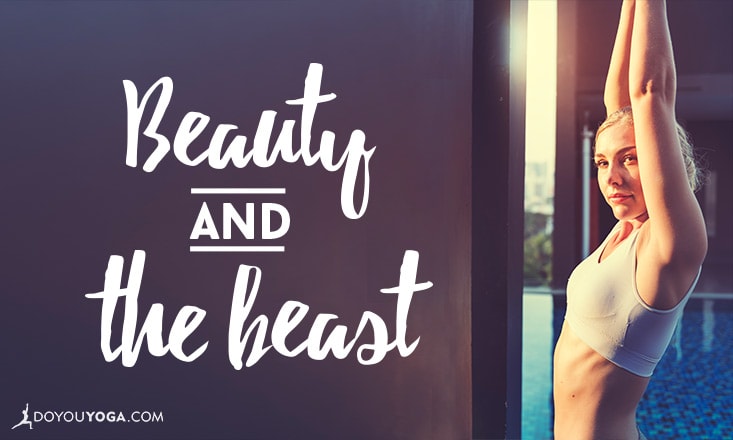We all know you are what you eat. Paying attention to the quality and freshness of your food can have major impacts on your long-term health and enjoyment of life.
Maybe you’re a vigilant organic foodie; maybe you spend hours at the grocery store meticulously checking labels for harmful preservatives, dyes and unpronounceable chemicals. But food is not the only way toxins get into the bloodstream. Your health depends on your diet, but it also depends on what you rub on your skin.
Skin is highly absorbent.
Don’t trick yourself into thinking that just because you’re not ingesting something, it’s not making its way into your circulatory system. Also remember that not all cosmetics are strictly topical — your toothpaste is meeting the inside of your mouth, one of the most absorbent places in the body.
And while you probably spit out most of the estimated 20 gallons of toothpaste you’ll use over the course of your lifetime, some of the chemicals it contains end up in your bloodstream.
Conventional beauty products are a health hazard.
Conventional cosmetics are chock-full of substances that are proven to pose huge health risks. Many chemicals used in cosmetics have been found to be carcinogenic.
The adverse effects of common substances found in commercial beauty products include minor issues such as allergic reactions, redness and swelling, as well as major complications including reproductive issues, liver, kidney and lung damage.
Carefully checking ingredients for some of the scariest toxins — triclosan, propylene glycol, sodium laurel sulphate, phlalates and parabens — won’t get you far, as these ingredients may not even be listed on the label!
A loophole in the FDA allows cosmetic manufacturers to lump a number of undisclosed ingredients together as “fragrance,” allowing producers to protect trade secrets, as well as hide the dirty truth. In a study by the Environmental Working Group and Health Care Without Harm, phlalates were found in three-quarters of the over-the-counter beauty products tested.
Phlalates are a family of industrial chemicals linked to permanent birth defects. Scarier still, none of the products tested in the study listed phlalates on the ingredients label.
Products labeled as “natural,” “hypoallergenic,” and “unscented” may sound like better options. However all of these terms are unregulated, and therefore, meaningless.
Why You Should Consider Making Your Own Beauty Products
The good news is that making your own beauty products can be easy, ethical, affordable and fun!
EASY
Once you’ve stocked up on a few key ingredients, you can make pretty much anything you need to primp and purify your face, skin, and hair. Most recipes are quick and require just a few simple steps. It’s not rocket science!
ETHICAL
Not only are store-bought beauty products bad for your personal health, they can also be incredibly damaging to the environment.
Foaming agents, chemicals and petroleum products used in conventional cosmetics end up in the water, to the great detriment of ecosystems and wildlife. Homemade products are safe to wash down the drain.
Additionally, you can reuse containers and spray bottles, eliminating plastic waste. And you can be sure your homemade products are not being tested on animals.
AFFORDABLE
The rule of thumb is if you wouldn’t eat it, you shouldn’t be putting it on your skin. This means that rounding up ingredients to make your own beauty products means heading to your kitchen!
Common ingredients include: honey, baking powder, apple cider vinegar, sea salt, coconut oil, olive oil and almond oil. You’ll also want scented essential oils like peppermint and tea tree, shea butter and beeswax.
The final price tag on a batch of homemade body scrub or lip balm will likely be less than store bought alternatives.
FUN
There are tons of recipes out there, but once you get the hang of the basics, is easy to start experimenting with your own creations. Grab a few friends to spend an afternoon mixing up concoctions with your own individual scents.
Toothpaste is an easy place to start, and one of the quickest ways to cut out a major source of unintentional chemical consumption. Here’s a simple recipe for homemade toothpaste to get you started:
- 2 Tbsp coconut oil
- 2 Tbsp baking soda
- 10 drops peppermint essential oil*
- 1 tsp sea salt
Mash coconut oil and baking soda together with a fork. Mix in salt and essential oil. *Peppermint can be substituted with sage, which also has antibacterial properties. For a sweeter taste, add a teaspoon or less of stevia or xylitol.
Those interested in further reading on DIY beauty products can look at these resources for information, tips, and recipes: Environmental Working Group, Campaign for Safe Cosmetics, For the Love of Body.


